Abstract
The genomic representation and organization of sequences homologous to a cloned Hind III 1.9 kb repeated DNA fragment were studied. Approximately 80% of homologous repeated DNA was contained in a genomic Hind III cleavage band of 1.9 kb. Double digestion studies indicated that the genomic family, in the majority, followed the arrangement of the sequenced clone, with minor restriction cleavage variations compatible with a few base changes. Common restriction sites external to the 1.9 kb sequence were mapped, and hybridization of segments of the cloned sequence indicated the 1.9 kb DNA was itself not tandemly repeated. Kpn I bands which were homologous to the sequence contained specific regions of the repeat, and the molecular weight of these larger fragments could be simply explained. Mapping of common external restriction sites indicated that in some but not all cases the repeat could be organized in larger defined blocks of greater than or equal to 5.5 kb. In some instances, flanking regions adjacent to the repeat may contain common DNA elements such as other repeated DNA sequences, or possibly rearranged segments of the 1.9 kb sequence. It is suggested that although the 1.9 kb sequence is not strictly contiguous, at least some of these repeated sequences in the human genome are arranged in clustered or intercalary arrays. A region of the 1.9 kb sequence hybridized to a mouse repeated DNA, indicating homology beyond the primates.
Full text
PDF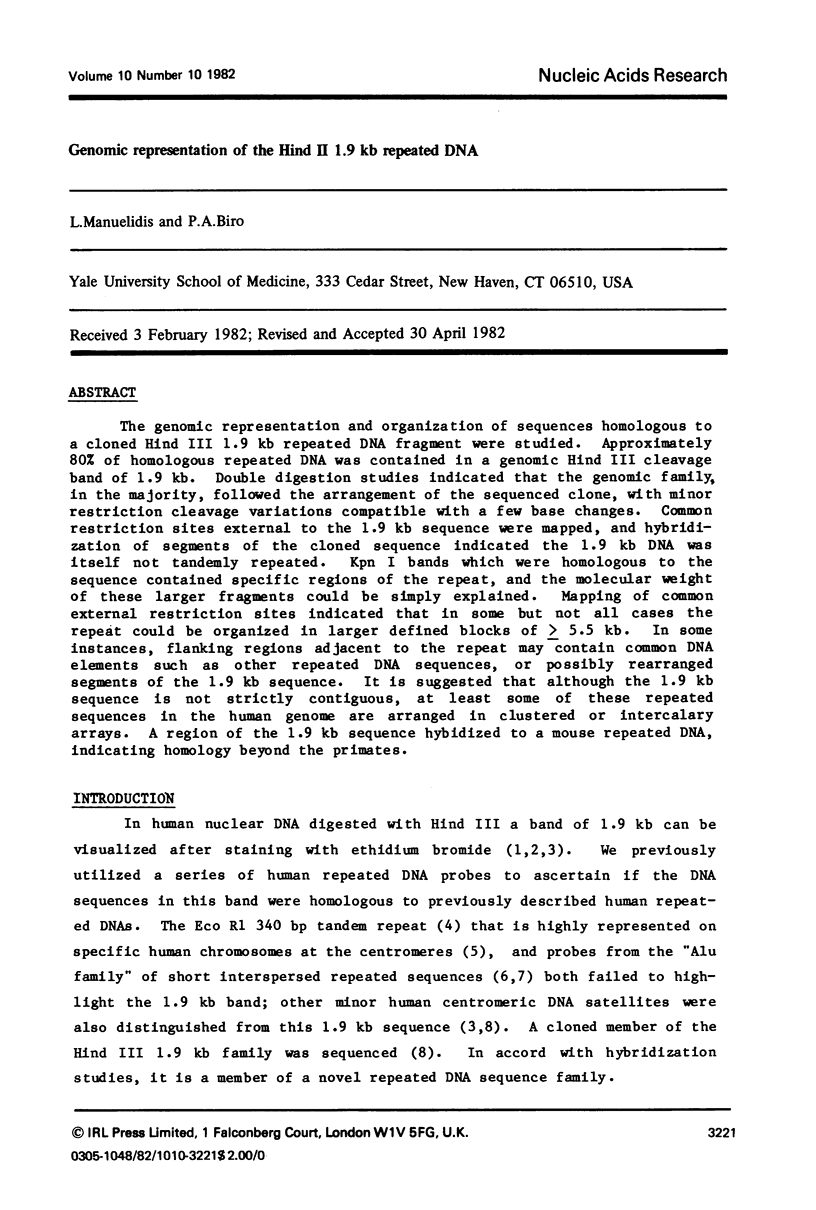
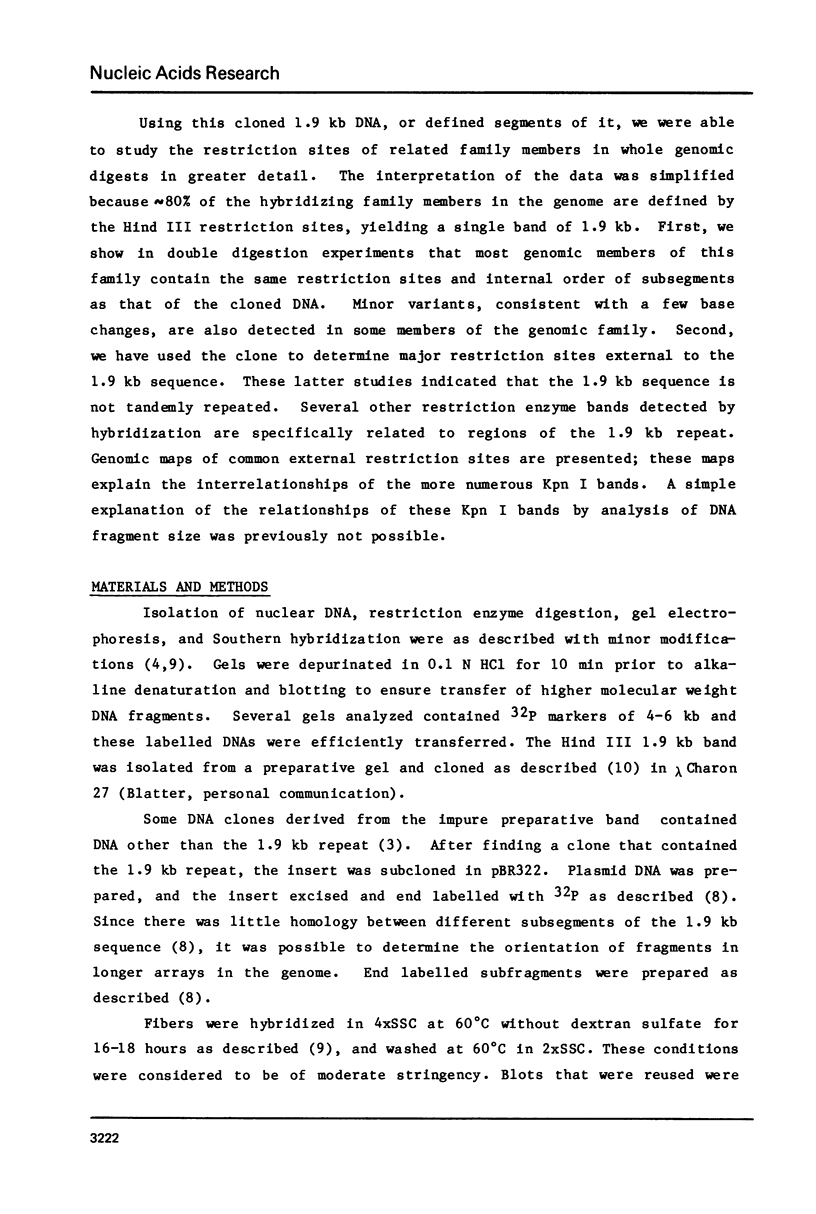
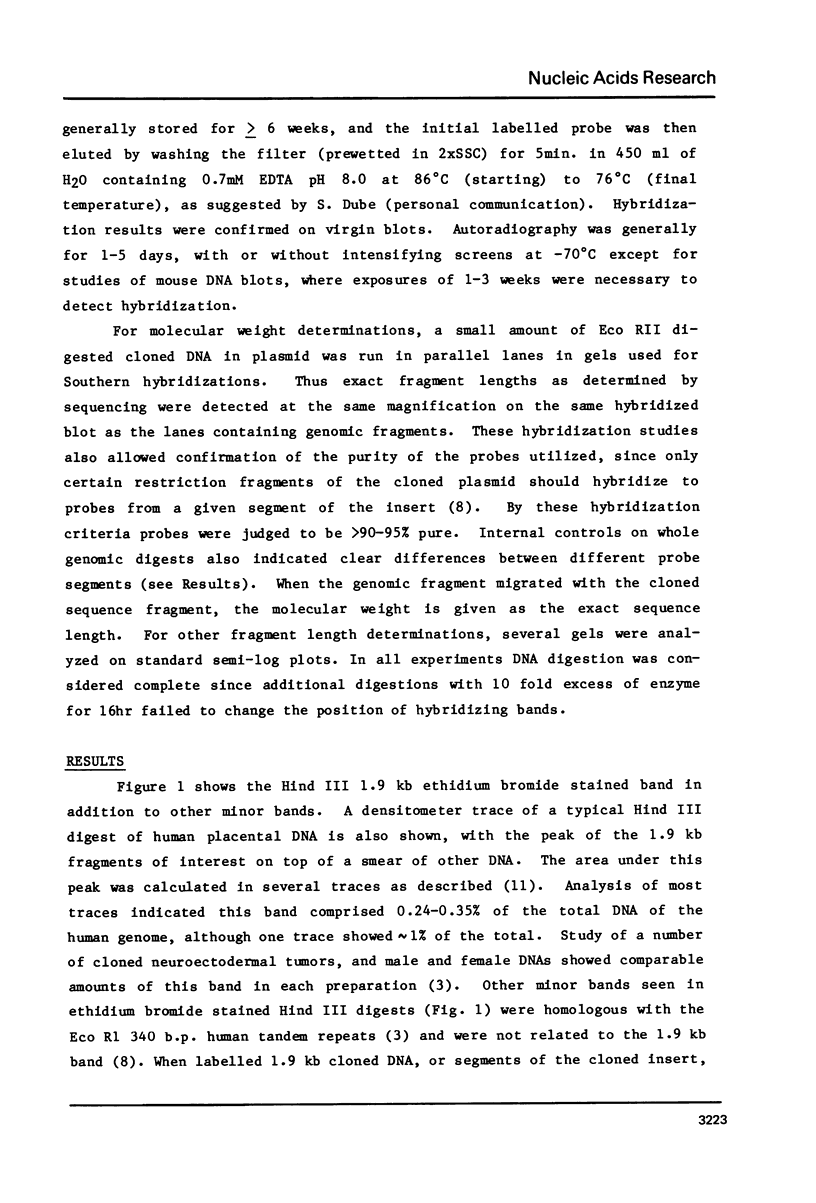
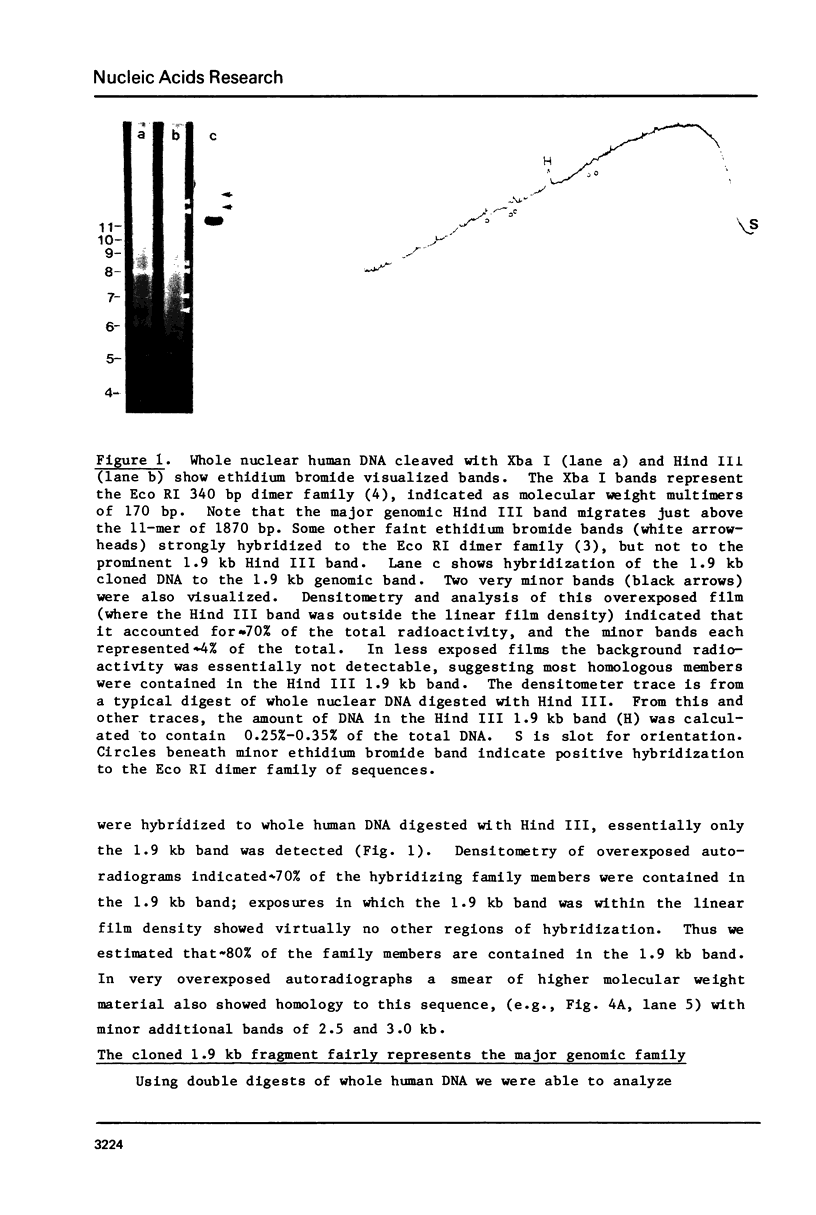
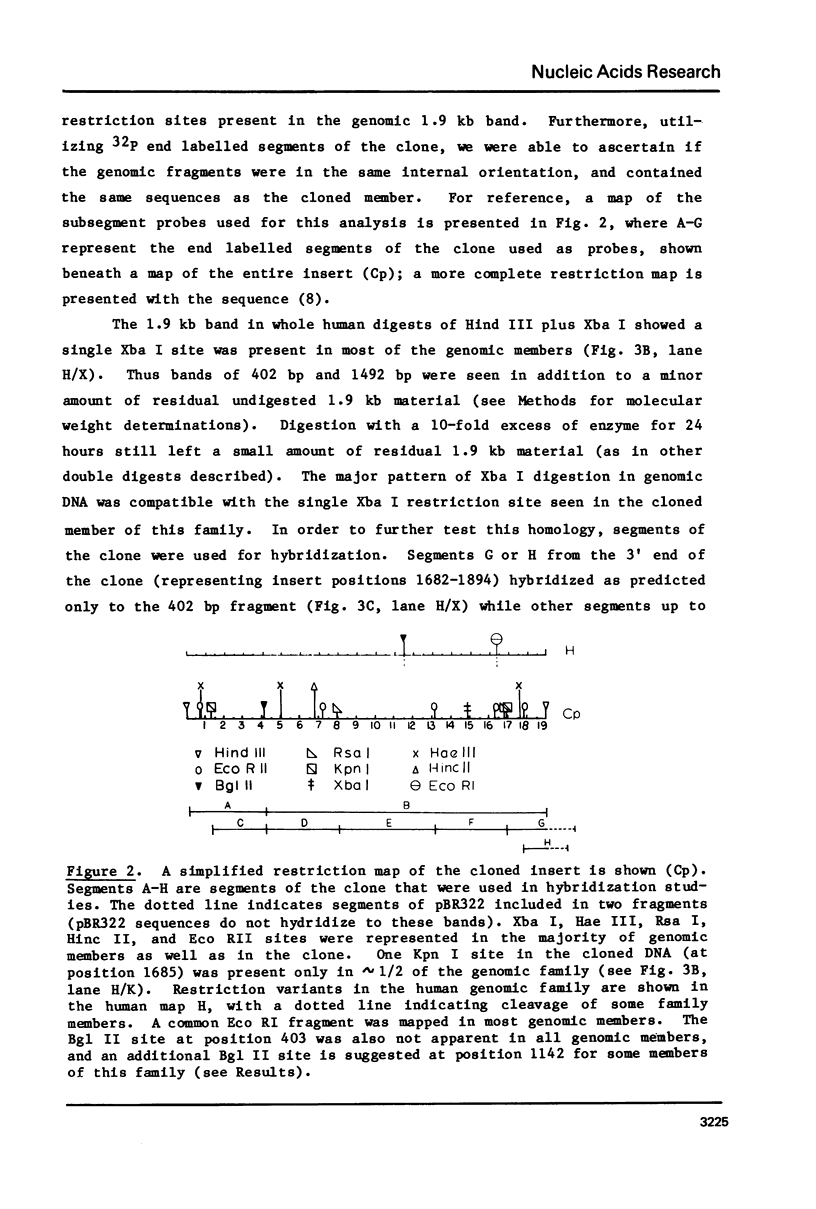
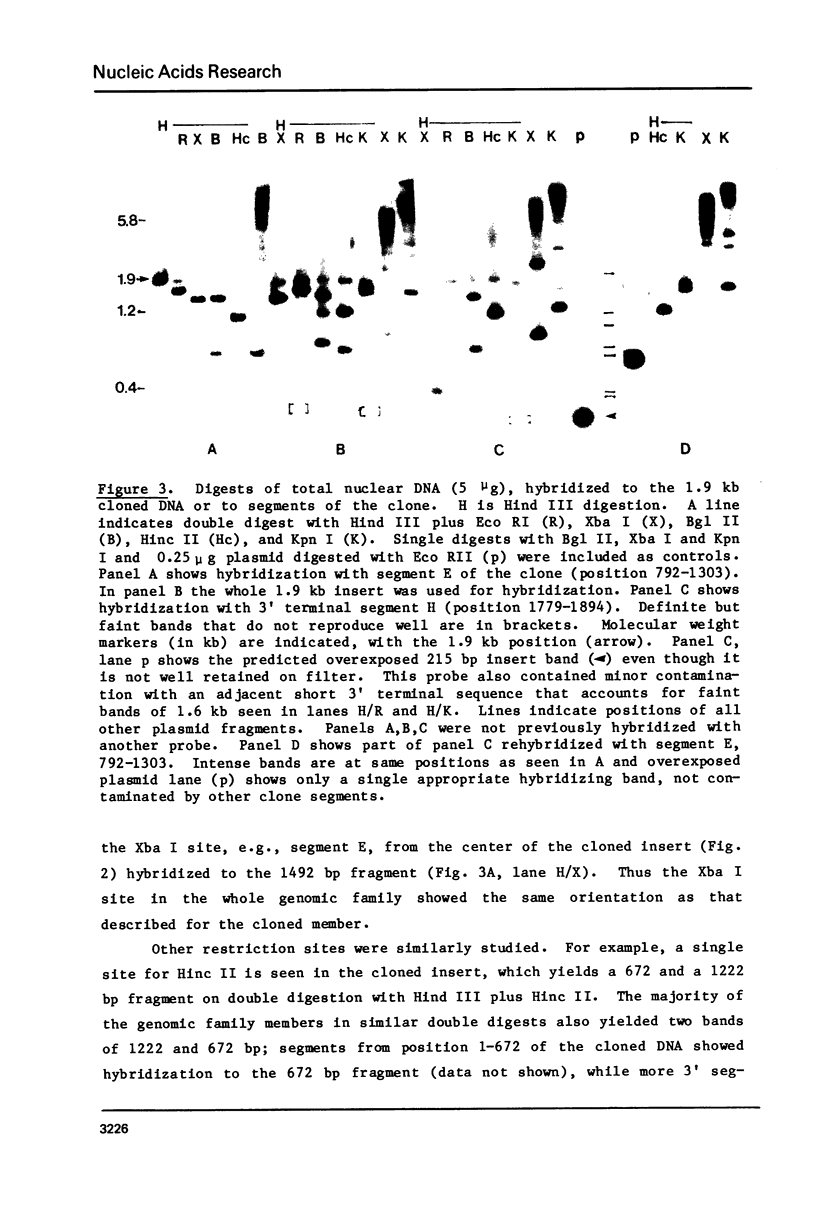

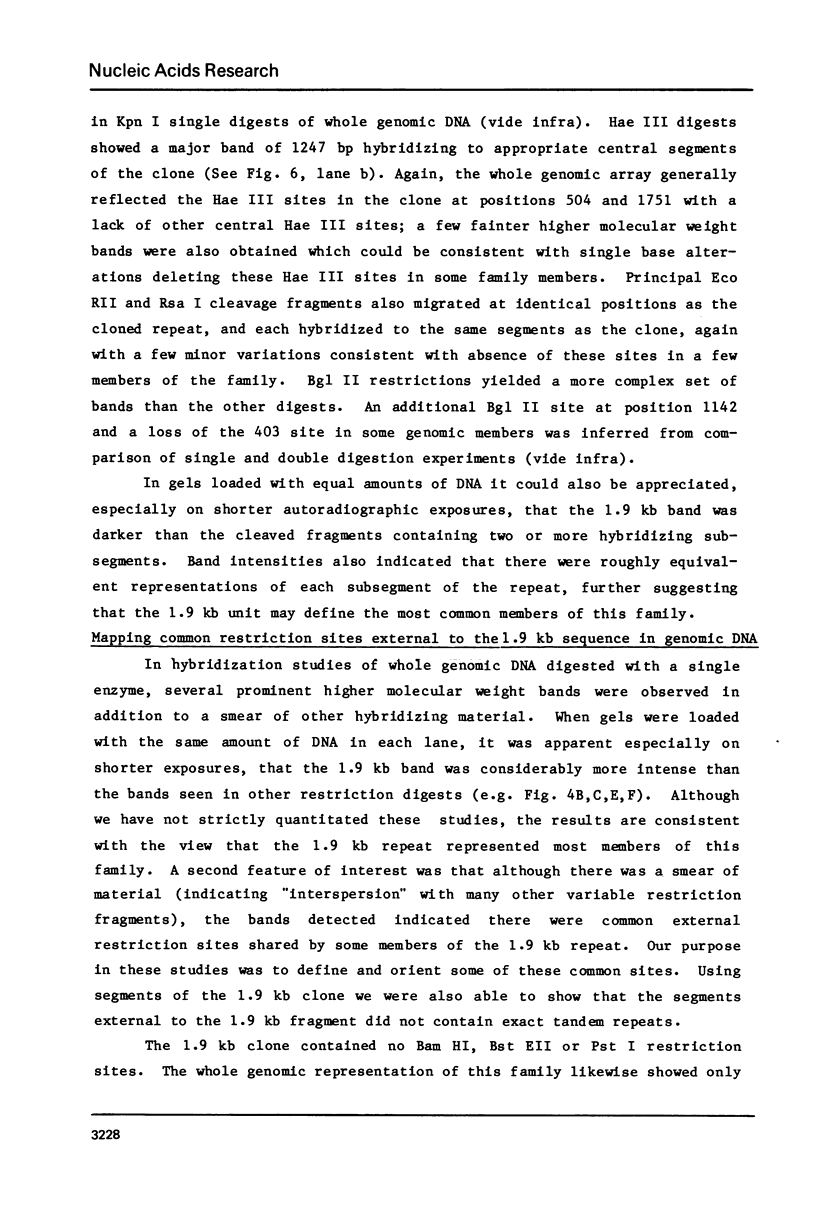
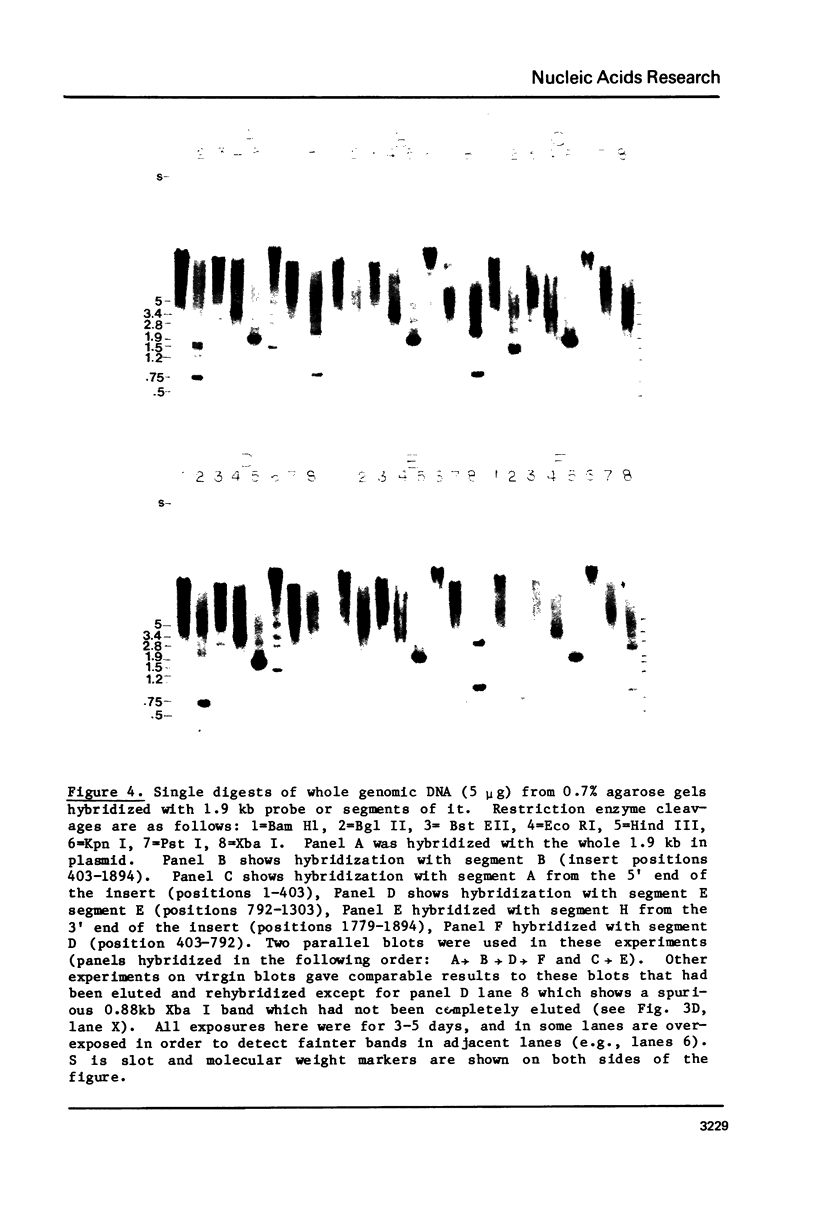
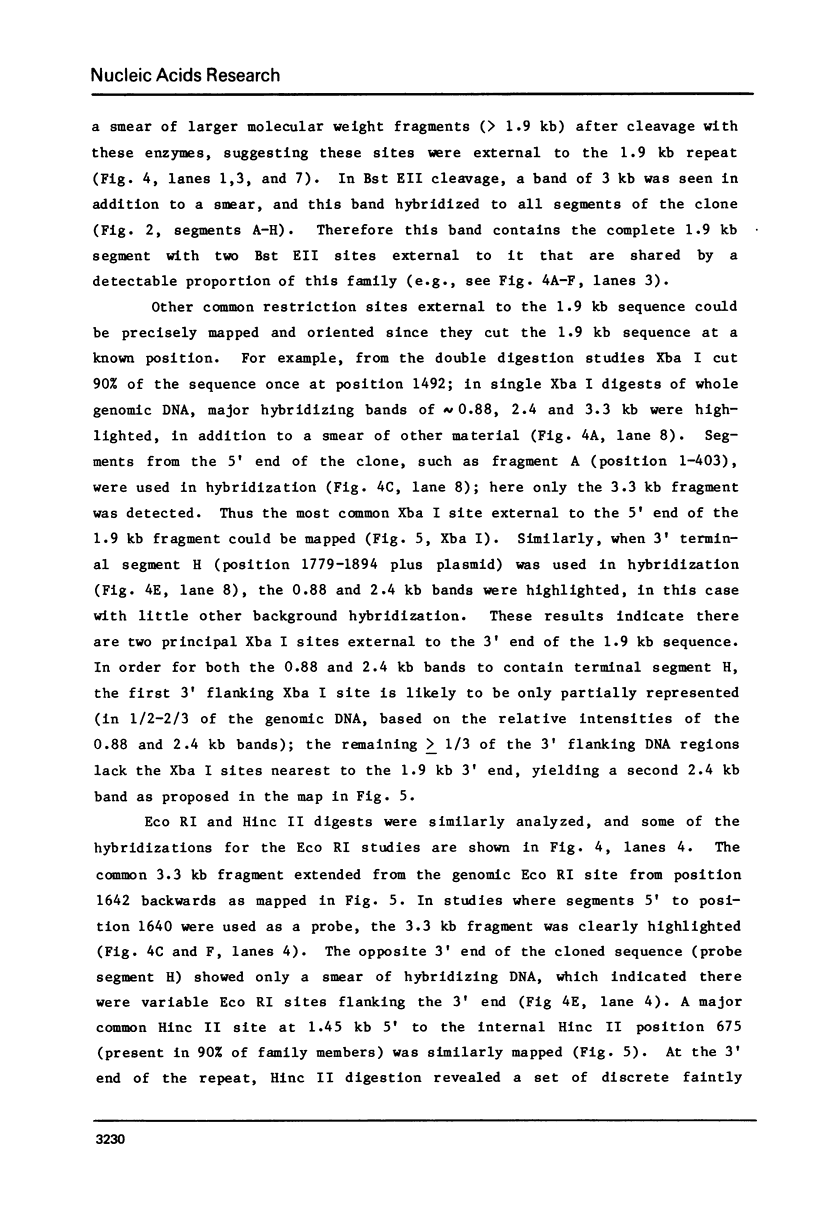
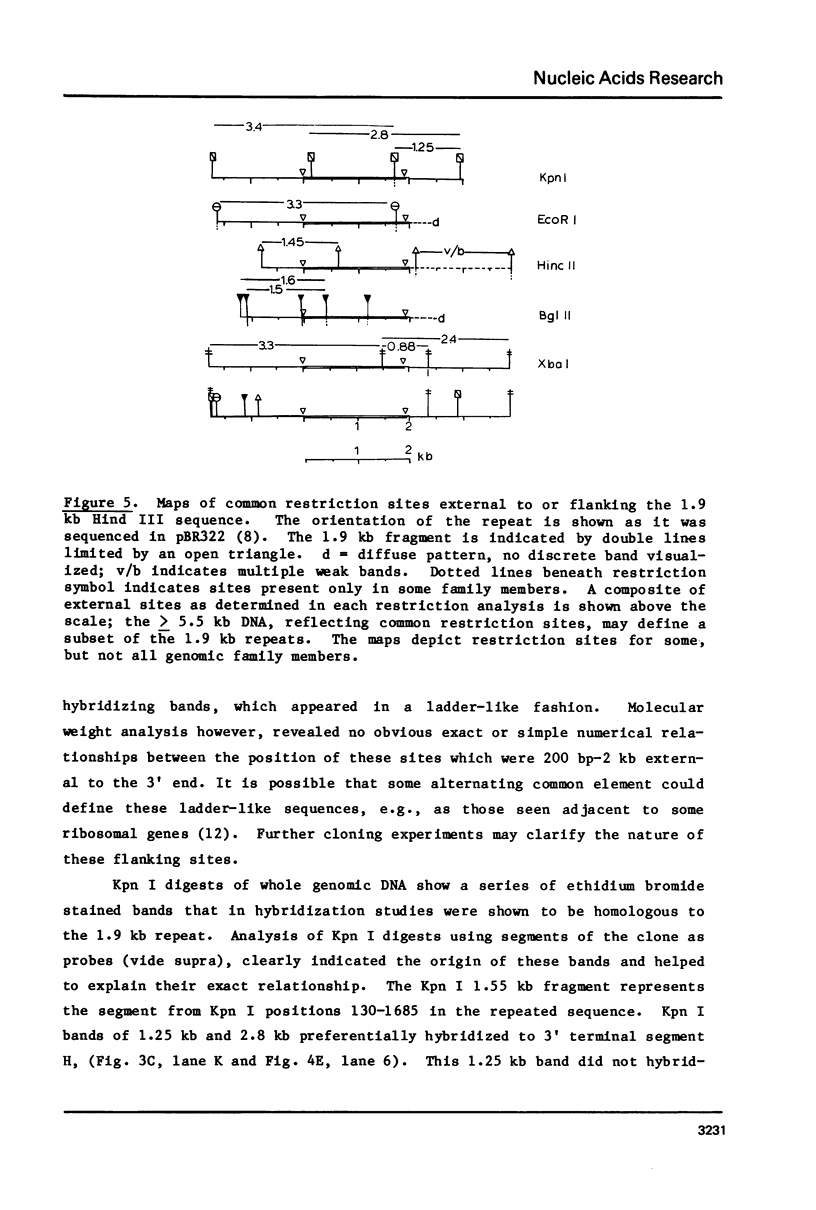
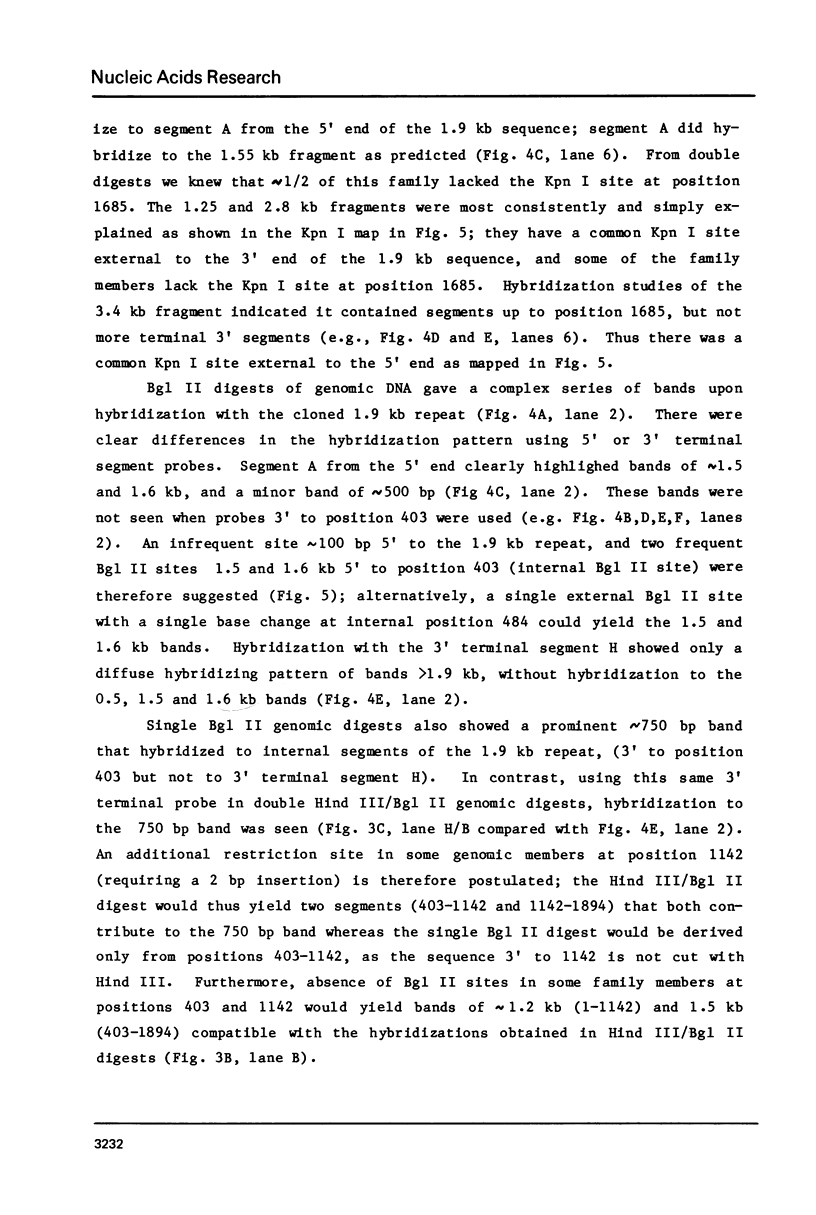
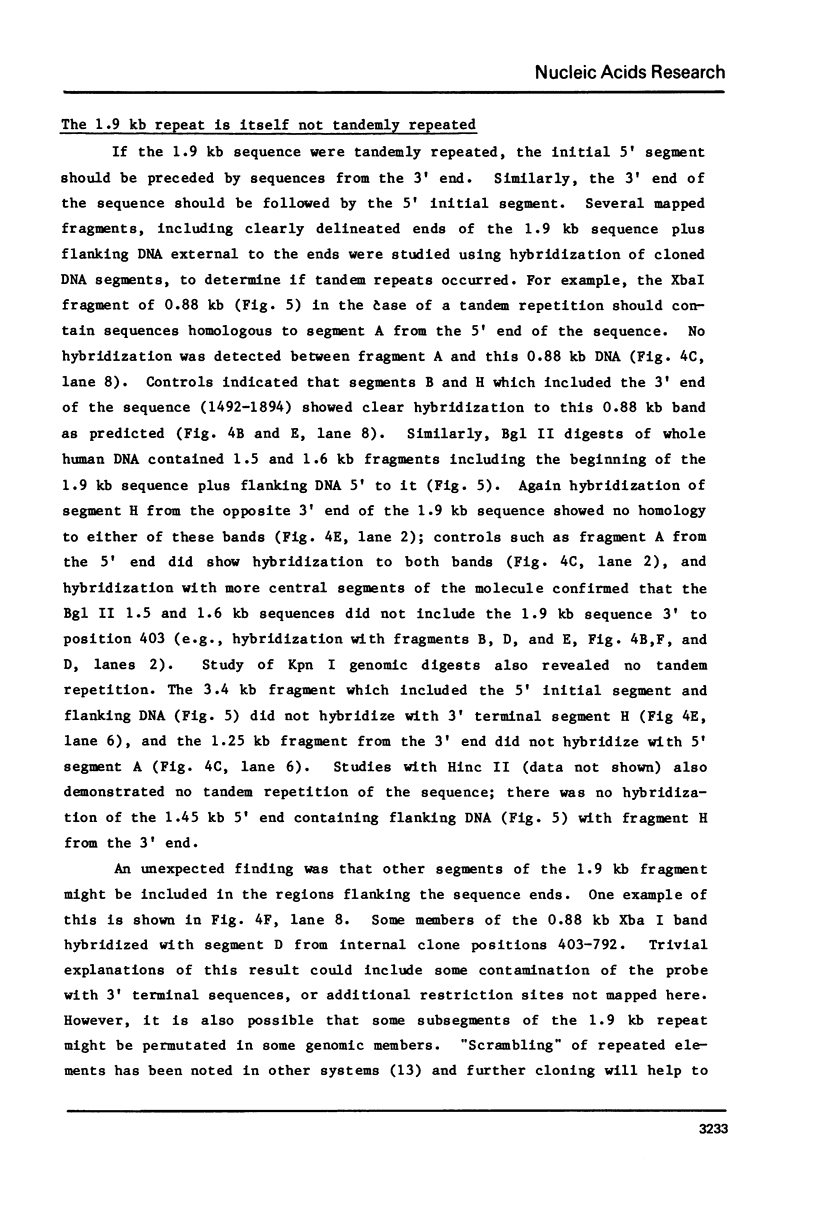
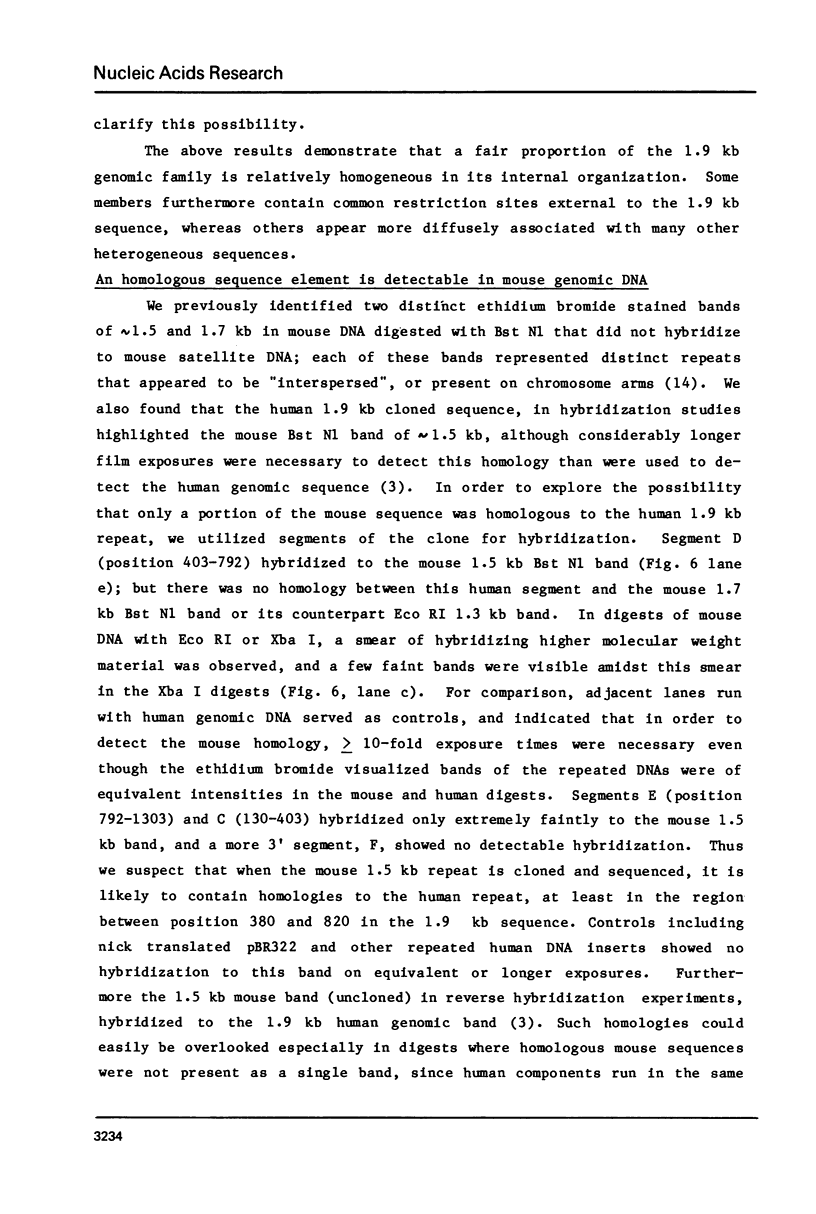
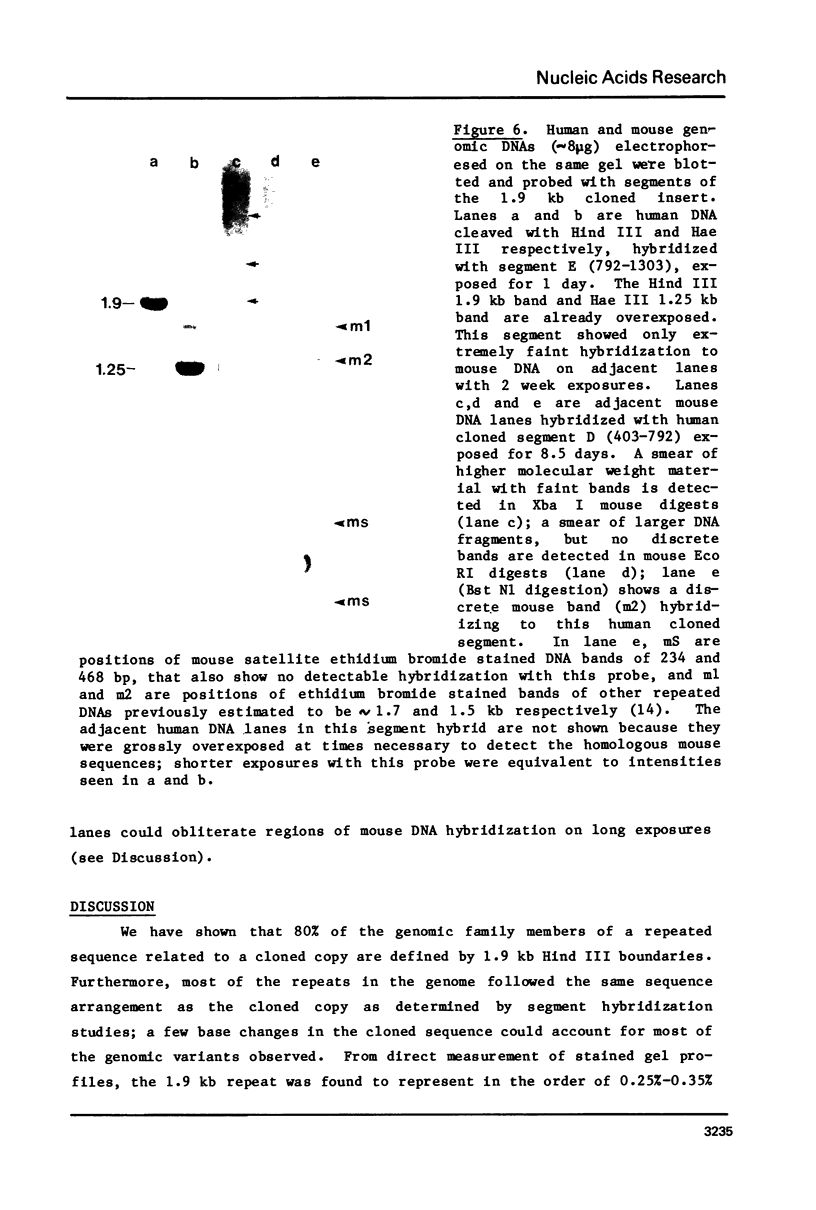
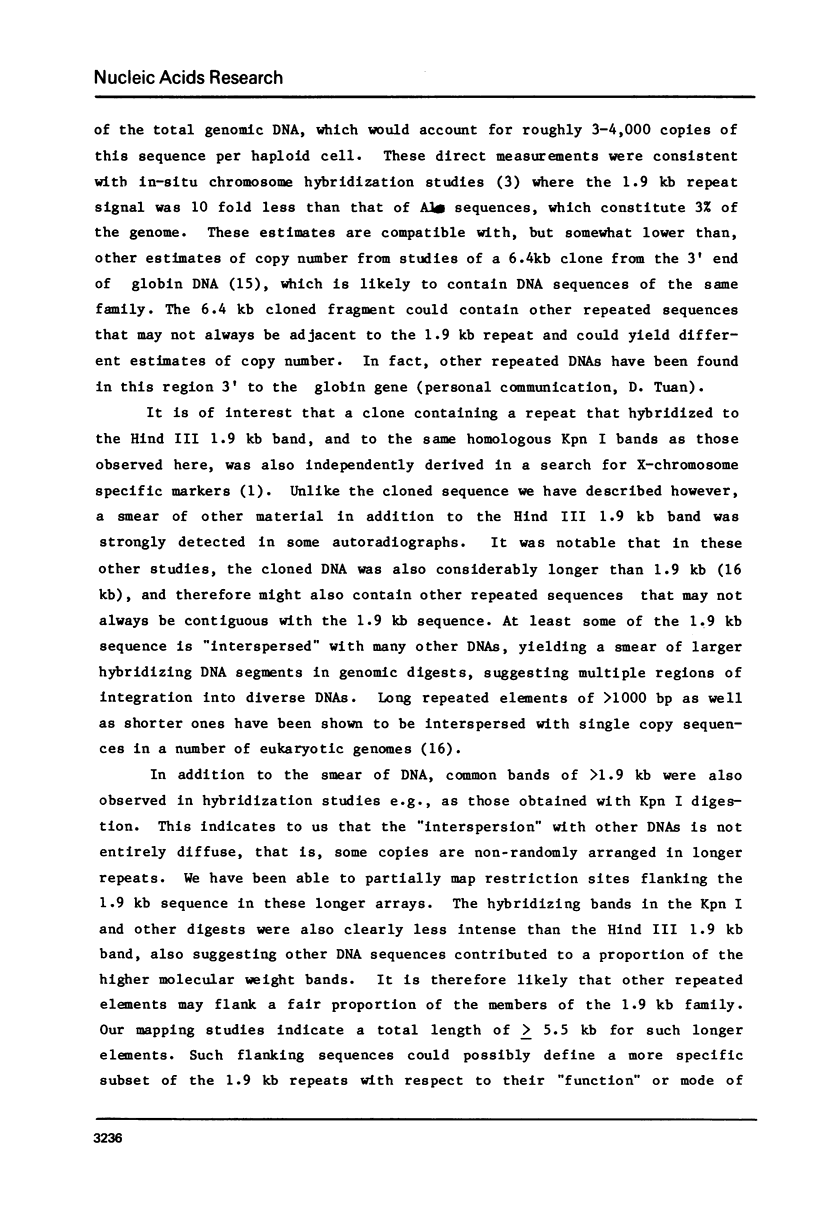
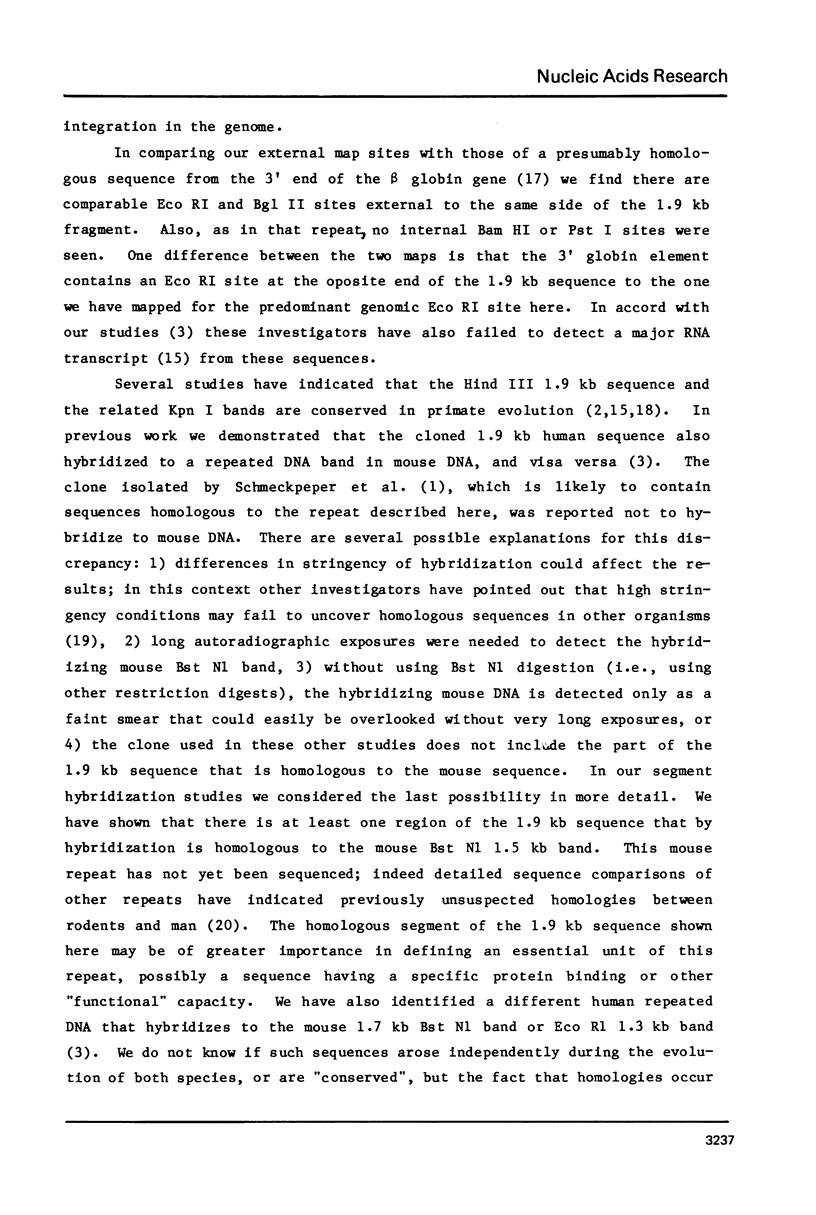
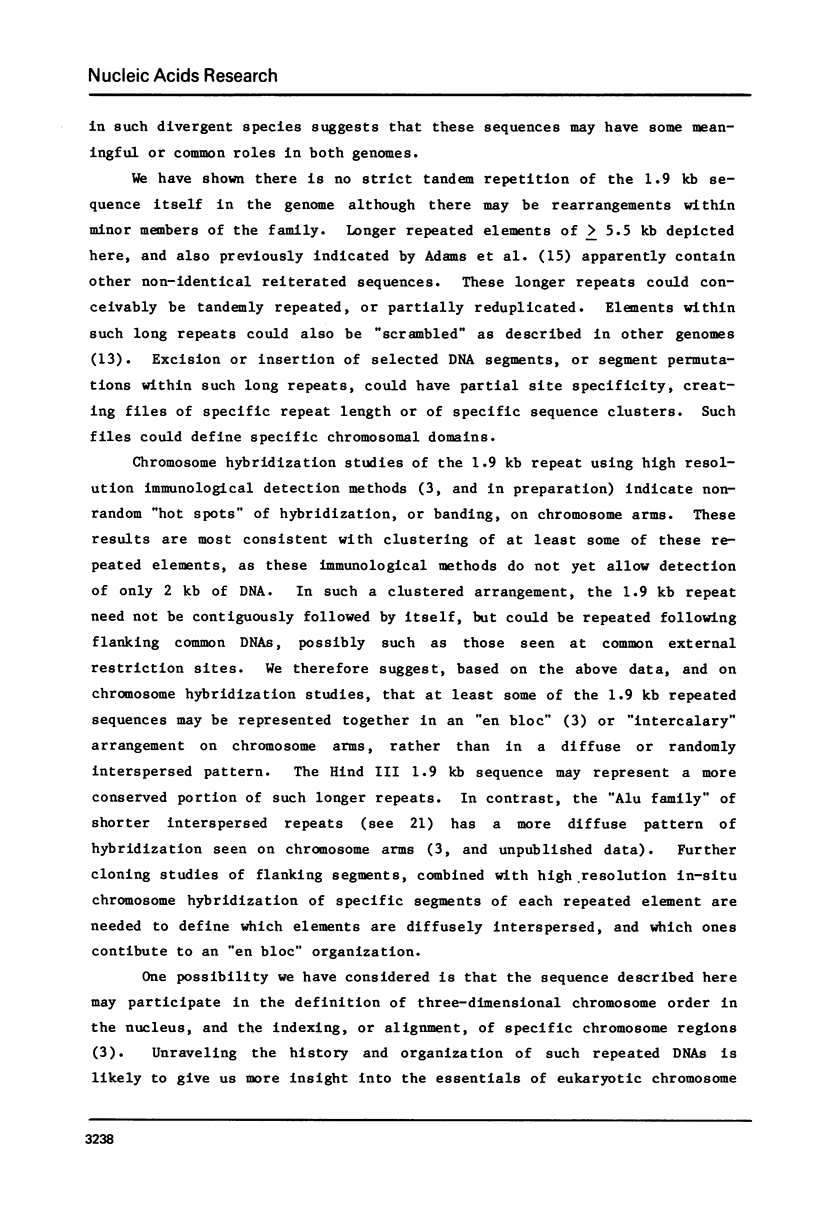

Images in this article
Selected References
These references are in PubMed. This may not be the complete list of references from this article.
- Adams J. W., Kaufman R. E., Kretschmer P. J., Harrison M., Nienhuis A. W. A family of long reiterated DNA sequences, one copy of which is next to the human beta globin gene. Nucleic Acids Res. 1980 Dec 20;8(24):6113–6128. doi: 10.1093/nar/8.24.6113. [DOI] [PMC free article] [PubMed] [Google Scholar]
- Boseley P., Moss T., Mächler M., Portmann R., Birnstiel M. Sequence organization of the spacer DNA in a ribosomal gene unit of Xenopus laevis. Cell. 1979 May;17(1):19–31. doi: 10.1016/0092-8674(79)90291-5. [DOI] [PubMed] [Google Scholar]
- Christie N. T., Skinner D. M. Interspersion of highly repetitive DNA with single copy DNA in the genome of the red crab, Geryon quinquedens. Nucleic Acids Res. 1979 Feb;6(2):781–796. doi: 10.1093/nar/6.2.781. [DOI] [PMC free article] [PubMed] [Google Scholar]
- Grosveld F. G., Dahl H. H., de Boer E., Flavell R. A. Isolation of beta-globin-related genes from a human cosmid library. Gene. 1981 Apr;13(3):227–237. doi: 10.1016/0378-1119(81)90028-7. [DOI] [PubMed] [Google Scholar]
- Kaufman R. E., Kretschmer P. J., Adams J. W., Coon H. C., Anderson W. F., Nienhuis A. W. Cloning and characterization of DNA sequences surrounding the human gamma-, delta-, and beta-globin genes. Proc Natl Acad Sci U S A. 1980 Jul;77(7):4229–4233. doi: 10.1073/pnas.77.7.4229. [DOI] [PMC free article] [PubMed] [Google Scholar]
- Maio J. J., Brown F. L., McKenna W. G., Musich P. R. Toward a molecular paleontology of primate genomes. II. The KpnI families of alphoid DNAs. Chromosoma. 1981;83(1):127–144. doi: 10.1007/BF00286020. [DOI] [PubMed] [Google Scholar]
- Maio J. J., Brown F. L., Musich P. R. Toward a molecular paleontology of primate genomes. I. The HindIII and EcoRI dimer families of alphoid DNAs. Chromosoma. 1981;83(1):103–125. doi: 10.1007/BF00286019. [DOI] [PubMed] [Google Scholar]
- Manuelidis L. Chromosomal localization of complex and simple repeated human DNAs. Chromosoma. 1978 Mar 22;66(1):23–32. doi: 10.1007/BF00285813. [DOI] [PubMed] [Google Scholar]
- Manuelidis L., Manuelidis E. E. Conservation of repeated DNA sequences in aneuploid human tumor cells. Chromosoma. 1979 May 10;72(3):257–269. doi: 10.1007/BF00331088. [DOI] [PubMed] [Google Scholar]
- Manuelidis L. Novel classes of mouse repeated DNAs. Nucleic Acids Res. 1980 Aug 11;8(15):3247–3258. doi: 10.1093/nar/8.15.3247. [DOI] [PMC free article] [PubMed] [Google Scholar]
- Manuelidis L. Repeating restriction fragments of human DNA. Nucleic Acids Res. 1976 Nov;3(11):3063–3076. doi: 10.1093/nar/3.11.3063. [DOI] [PMC free article] [PubMed] [Google Scholar]
- Miesfeld R., Krystal M., Arnheim N. A member of a new repeated sequence family which is conserved throughout eucaryotic evolution is found between the human delta and beta globin genes. Nucleic Acids Res. 1981 Nov 25;9(22):5931–5947. doi: 10.1093/nar/9.22.5931. [DOI] [PMC free article] [PubMed] [Google Scholar]
- Pan J., Elder J. T., Duncan C. H., Weissman S. M. Structural analysis of interspersed repetitive polymerase III transcription units in human DNA. Nucleic Acids Res. 1981 Mar 11;9(5):1151–1170. [PMC free article] [PubMed] [Google Scholar]
- Pech M., Igo-Kemenes T., Zachau H. G. Nucleotide sequence of a highly repetitive component of rat DNA. Nucleic Acids Res. 1979 Sep 25;7(2):417–432. doi: 10.1093/nar/7.2.417. [DOI] [PMC free article] [PubMed] [Google Scholar]
- Rubin C. M., Houck C. M., Deininger P. L., Friedmann T., Schmid C. W. Partial nucleotide sequence of the 300-nucleotide interspersed repeated human DNA sequences. Nature. 1980 Mar 27;284(5754):372–374. doi: 10.1038/284372a0. [DOI] [PubMed] [Google Scholar]
- Schmeckpeper B. J., Willard H. F., Smith K. D. Isolation and characterization of cloned human DNA fragments carrying reiterated sequences common to both autosomes and the X chromosome. Nucleic Acids Res. 1981 Apr 24;9(8):1853–1872. doi: 10.1093/nar/9.8.1853. [DOI] [PMC free article] [PubMed] [Google Scholar]
- Wensink P. C., Tabata S., Pachl C. The clustered and scrambled arrangement of moderately repetitive elements in Drosophila DNA. Cell. 1979 Dec;18(4):1231–1246. doi: 10.1016/0092-8674(79)90235-6. [DOI] [PubMed] [Google Scholar]
- Wu J. C., Manuelidis L. Sequence definition and organization of a human repeated DNA. J Mol Biol. 1980 Sep 25;142(3):363–386. doi: 10.1016/0022-2836(80)90277-6. [DOI] [PubMed] [Google Scholar]






